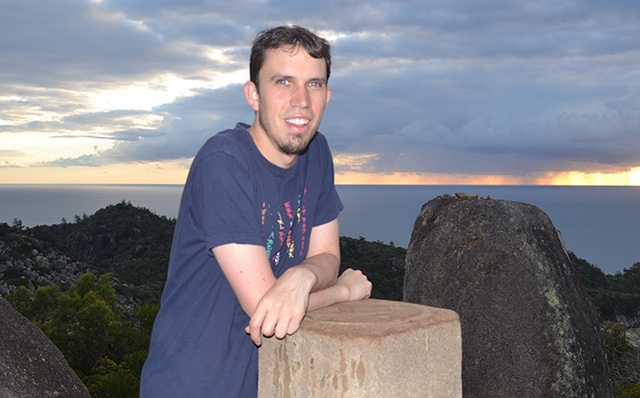
The road to sea-lice-resistant Atlantic salmon
An interview with Diego Robledo, PhD, scientist in aquaculture genetics and genomics at the Roslin Institute in Edinburgh.
Q: What are the current issues affecting treatment of sea lice in salmon aquaculture?
DR: There have been some delousing drugs used that the sea lice were simply able to overcome. The more we use them, the more likely they are to become resistant. Other treatments involve taking the fish out of the water for bath treatments, which is stressful for the animals and, in some cases, can be harmful for the environment.
Q: Your team is undertaking a project which aims to ultimately produce lice-resistant Atlantic salmon. What insight has previous research in this area given you?
DR: We’ve seen that there is difference in resistance to sea lice between different Atlantic salmon animals, and that’s heritable. So, you can slowly improve this resistance via selective breeding. However, Atlantic salmon has a 4-year breeding cycle, which means that progress is relatively slow.
Further, while we are selecting for resistance to sea lice, we don’t know the biological mechanisms underpinning that resistance. There’s always the risk that the sea lice will adapt to overcome that or that you are selecting for something that in the long term is not really effective. A promising alternative is genome editing: Making just a small change in the genome that leads to a salmon line with complete resistance to sea lice is very appealing and would have massive benefits.
Q: And what are your expectations for the project?
DR: Professor Mark Fast and others have discovered that coho salmon are completely resistant to sea lice. Their immune cells encapsulate the parasite in the early stages and kill it. While this is a complex biological mechanism, it might be possible to transfer this mechanism to Atlantic salmon. Ultimately, we want to learn about the differences between coho and Atlantic salmon and, based on that, devise a way to make Atlantic salmon completely resistant too. This will be done in collaboration with our partners in Benchmark Genetics, who both support our basic research and will contribute to the more applied side of the project.
Q: Given the resistance of coho salmon, why aren’t they just farmed instead of Atlantic salmon?
DR: Coho salmon grow significantly slower than Atlantic salmon and, although I have not tasted it, I assume its flavor will be slightly different. As it stands, there is a large demand for Atlantic salmon, which drives production in aquaculture. However, coho salmon is already farmed in Chile, for example, with significant production. It is possible that we will see coho farmed more extensively in the near future, but that will depend on consumer demand. It is also worth mentioning that coho salmon is native to the Pacific Ocean, so bringing it to Scotland or Norway would pose significant ecological risks unless escapees can be completely prevented.
Q: To what extent are new technologies enabling you to take on this work?
DR: I would not say they are fundamental, but they definitely make things so much easier. The two novel pieces of technology we are using are single-cell RNA sequencing and CRISPR.
Single-cell RNA sequencing has enabled us to look at biological processes at single-cell resolution, whereas before we had to study them at tissue level. Now we can dissociate the tissue into individual cells, which gives us so much more power; for example, in this case we will be able to see which cells are encapsulating the parasite in the coho and if those cells are present in the Atlantic salmon skin. If so, are they doing something different? What are they “missing”?
CRISPR makes genome editing so much simpler. Previously we could edit genomes using other technologies, but they were difficult to use. CRISPR has democratized genome editing in a way, which can now be applied to a wide range of species relatively easily.
Q: Has any previous work provided clues about what areas of the genome to target?
DR: In Atlantic salmon, we have actually found some promising regions that we could explore, but regions or genes explaining the differences between Atlantic salmon and coho, not so much. The goal of the project is to understand the differences in resistance to sea lice between Atlantic and coho, discovering genes and pathways that can be targeted in Atlantic salmon to increase their resistance.
Q: To what extent has CRISPR gene editing been used in aquaculture to date?
DR: It has not been used in commercial settings yet, at least that I know of, although in Japan they have recently approved the commercialization of two CRISPR-edited fish — red seabream and tiger puffer — which have been edited to make them grow faster. In our laboratory we have used CRISPR to develop fish resistant to various diseases. Dr. Anna Wargelius and her group in Norway have worked on sexual maturation and sterility in Atlantic salmon, which is important if we want to commercialize any genome-edited fish here, since they will need to be sterile.
Q: Are there any risks of unintended consequences with these kinds of approaches?
DR: When you tinker with a gene, there can be consequences for the fish. We don’t know if our target genes are affecting other traits, so before any edited fish is commercialized we will need to evaluate potential impact on its physiology. The second consideration is that we should not allow these edits to be transferred to wild population. That is not a concern with livestock, but with aquaculture it is, and that is why the work on sterility I mentioned above is so important.
That said, CRISPR has enormous potential, and its benefits largely outweigh its potential caveats. CRISPR genome editing is an outstanding research tool with huge potential for farmed animals. When you are targeting growth traits it is easy for people to argue that we could just do things in a different way. But when used to tackle such a massive welfare issue as sea lice, where the animals are suffering and treatments can be environmentally damaging, also possibly affecting wild fish, I would expect consumers to see it differently. I think the application of CRISPR to tackle diseases is one of those situations where everyone wins: animals, environment, consumers and producers.
Q: If this project turns out to be successful, how do you see the road to this becoming commercialized?
DR: If we are able to develop sea-lice-resistant Atlantic salmon, I think it would then go two ways. Breeding companies will have to figure out how to implement the edited fish without affecting their core breeding program. As mentioned before, the edited farmed fish will have to be sterile so that the edit is not transferred to wild fish populations, but they will still need to continue with their breeding program, which needs fertile animals. This is not straightforward and will require innovative approaches.
In parallel, it will open a public and political dialogue about allowing this technology to be used in Scotland. Sea lice are such a huge issue affecting salmon welfare that the application of this technology would be a win-win. If we find a solution to the sea lice problem, it would be illogical not to implement it.
Posted on: April 05, 2022






